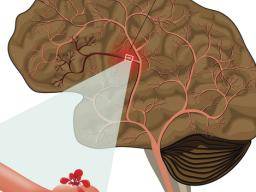

The RBCs carry oxygen to the body’s tissues. The blood cells affected are the red blood cells (RBCs), platelets and white blood cells (WBCs). The development of autoantibodies that bind to and destroy blood cells is the most common autoimmune disease seen in primary immunodeficiency diseases. The focus of this chapter is to provide an overview of the types of immune dysregulation and autoimmunity that can occur in various primary immunodeficiency diseases. Most of these diseases are discussed in greater detail in other chapters. These include Common Variable Immune Deficiency (CVID), Wiskott-Aldrich Syndrome (WAS), IgA deficiency, Good Syndrome, Hyper IgM Syndrome, Idiopathic T-cell Lymphopenia (ICL) and Complement disorders. These include Autoimmune Polyendocrinopathy Candidiasis Ectodermal Dysplasia (APECED or APS-1) Autoimmune Lymphoproliferative Syndrome (ALPS) and Immune dysregulation Polyendocrinopathy, Enteropathy, and X-linked (IPEX) syndrome.Ĭertain other immune disorders are frequently associated with autoimmune complications. However, certain primary immunodeficiency diseases have autoimmune disease as their primary problem. It is recommended to use a team approach when using immunosuppressive treatment, joining the skills of the immunologist with those of a specialist in treating the organ system involved, be it gastroenterology, rheumatology, pulmonology, endocrinology, nephrology, dermatology or hematology.Īutoimmune complications have been reported in a wide range of primary immunodeficiency diseases. Obviously, using immunosuppressive treatment in a patient already afflicted with immunodeficiency involves a complex balancing act to avoid unwanted infections and other serious side effects while still using sufficient immunosuppressive treatment to control the autoimmune process. One of the ironies of this situation is that the treatment for autoimmune conditions is the use of immune suppression to shut down the inappropriate immune response that is causing the problem. In other autoimmune diseases, the cellular immune system may also react against a body’s auto-antigens. Sometimes these antibodies themselves are harmless but suggest the presence of an autoimmune disease. One common type of autoimmunity is when the immune system makes antibodies against normal cells and/or tissues of the body which are known as “autoantibodies.” Sometimes people with primary immunodeficiency diseases cannot make “good” antibodies to protect against infection but only make “bad” autoantibodies, which then cause autoimmune disease. Definition of Autoimmunity in Primary ImmunodeficiencyĪ normal immune system makes proteins known as antibodies that recognize and prevent foreign organisms (bacteria, viruses) from causing infection.

Put another way, it is when the immune system attacks the body in which it resides. This can lead to autoimmunity, one form of immune dysregulation in which the immune response is directed against normal parts of the body such as cells, tissues or organs (called auto-antigens). Many times, abnormalities in the immune system that lead to primary immunodeficiency diseases also result in immune dysregulation, which is an immune response that is not properly controlled or restrained. Primary immunodeficiency diseases are characterized by abnormalities in specific components of the immune system that lead to an increased susceptibility to infection. The immune system is a complex set of organs, cells, proteins and other substances that function to prevent infection.


 0 kommentar(er)
0 kommentar(er)
